#Marine Survey Australia
Text

New SpaceTime out Monday....
SpaceTime 20240422 Series 27 Episode 49
Discovery of the most massive stellar black hole in our galaxy
Astronomers have identified the most massive stellar black hole yet discovered in the Milky Way galaxy.


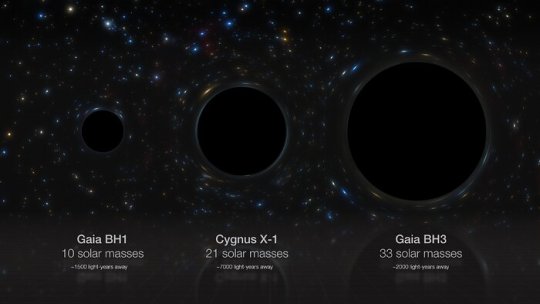

Rewriting the evolution of white dwarf stars
Astronomers have discovered a small population of white dwarf stars that have mysteriously stopped cooling.


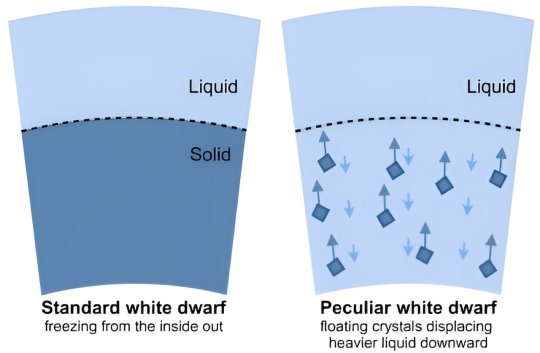
Development of a new bigger Cygnus Cargo ship
Engineers are developing a new updated version of the Cygnus Cargo ship for future supply missions to the International Space Station.
The Science Report
The Bureau of Meteorology has declared the El Niño weather event of 2023-24 has finally ended.
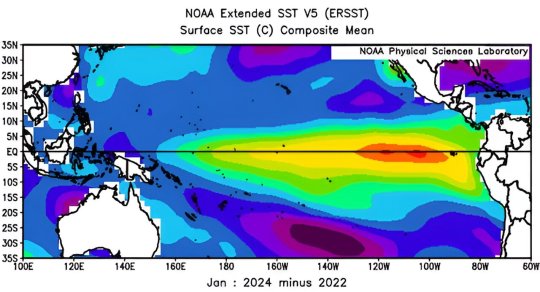

Claims drinking more than a glass of sweetened drinks daily linked to chronic kidney disease.
Scientists discover the remains of what could be the largest marine reptile ever to live.
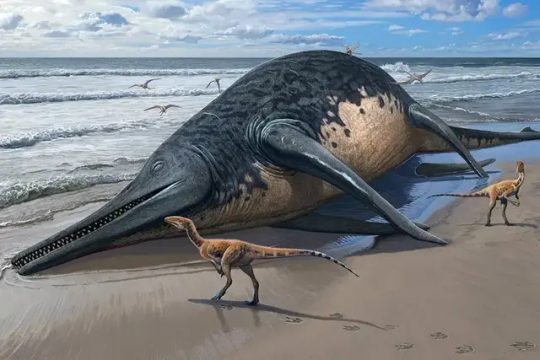
Skeptics guide to Sweden’s paranormal phenomena archive
SpaceTime covers the latest news in astronomy & space sciences.
The show is available every Monday, Wednesday and Friday through Apple Podcasts (itunes), Stitcher, Google Podcast, Pocketcasts, SoundCloud, Bitez.com, YouTube, your favourite podcast download provider, and from www.spacetimewithstuartgary.com
SpaceTime is also broadcast through the National Science Foundation on Science Zone Radio and on both i-heart Radio and Tune-In Radio.
SpaceTime daily news blog: http://spacetimewithstuartgary.tumblr.com/
SpaceTime facebook: www.facebook.com/spacetimewithstuartgary
SpaceTime Instagram @spacetimewithstuartgary
SpaceTime twitter feed @stuartgary
SpaceTime YouTube: @SpaceTimewithStuartGary
SpaceTime -- A brief history
SpaceTime is Australia’s most popular and respected astronomy and space science news program – averaging over two million downloads every year. We’re also number five in the United States. The show reports on the latest stories and discoveries making news in astronomy, space flight, and science. SpaceTime features weekly interviews with leading Australian scientists about their research. The show began life in 1995 as ‘StarStuff’ on the Australian Broadcasting Corporation’s (ABC) NewsRadio network. Award winning investigative reporter Stuart Gary created the program during more than fifteen years as NewsRadio’s evening anchor and Science Editor. Gary’s always loved science. He studied astronomy at university and was invited to undertake a PHD in astrophysics, but instead focused on his career in journalism and radio broadcasting. He worked as an announcer and music DJ in commercial radio, before becoming a journalist and eventually joining ABC News and Current Affairs. Later, Gary became part of the team that set up ABC NewsRadio and was one of its first presenters. When asked to put his science background to use, Gary developed StarStuff which he wrote, produced and hosted, consistently achieving 9 per cent of the national Australian radio audience based on the ABC’s Nielsen ratings survey figures for the five major Australian metro markets: Sydney, Melbourne, Brisbane, Adelaide, and Perth. The StarStuff podcast was published on line by ABC Science -- achieving over 1.3 million downloads annually. However, after some 20 years, the show finally wrapped up in December 2015 following ABC funding cuts, and a redirection of available finances to increase sports and horse racing coverage. Rather than continue with the ABC, Gary resigned so that he could keep the show going independently. StarStuff was rebranded as “SpaceTime”, with the first episode being broadcast in February 2016. Over the years, SpaceTime has grown, more than doubling its former ABC audience numbers and expanding to include new segments such as the Science Report -- which provides a wrap of general science news, weekly skeptical science features, special reports looking at the latest computer and technology news, and Skywatch – which provides a monthly guide to the night skies. The show is published three times weekly (every Monday, Wednesday and Friday) and available from the United States National Science Foundation on Science Zone Radio, and through both i-heart Radio and Tune-In Radio.
#science#space#astronomy#physics#news#nasa#esa#astrophysics#spacetimewithstuartgary#starstuff#spacetime#nasa photos#jwst#hubble space telescope
15 notes
·
View notes
Text
Marine conservationists warned Thursday that Australia's Great Barrier Reef may be suffering its worst-ever coral bleaching event amid record ocean heat fueled by the worsening climate emergency.
The Australian Marine Conservation Society (AMCS) said that bleached corals have been found at depths of up to nearly 60 feet, and "some corals are starting to die as they face record marine heatwaves."
"Corals bleach when they are stressed by warmer waters for an extended period of time—during marine heatwaves, which are driven by climate change," AMCS explained. "They expel the algae that inhabit them, which is their main energy source and they starve, sometimes to death."
Data collected from aerial surveys shows that 75% of the Great Barrier Reef has bleached during the current event, which the U.S. National Oceanic and Atmospheric Administration warned last month is likely to be "the worst bleaching event" ever observed in the world.
5 notes
·
View notes
Text
The Great Barrier Reef Is Doing Great; People Should Know
The GBR is made up of approximately 3,000 reefs covering an area nearly the size of California off Australia’s eastern coast. The condition of its coral is frequently referenced as an indicator of the reef’s health, regularly in the context of the supposed damage global warming is doing to the planet.
The reef now has more coral than any time since records began in 1986, according to the Australian Institute of Marine Science (AIMS). There is roughly 20 percent more coral on the GBR than last year, which itself equaled a previous record year. All three major regions of the reef now have excellent coral cover and AIMS states that two regions are at record breaking high levels.
As of the latest 2022 survey of the GBR, coral covered 34 percent of the seabed, double the lowest coverage recorded in 2012.
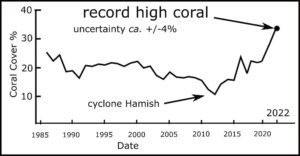
Data
Dr. Peter Ridd — a geophysicist, physical oceanographer and inventor — has worked on the Great Barrier Reef since 1984 and has written over 100 scientific publications.
53 notes
·
View notes
Text
https://www.theguardian.com/environment/2022/jun/05/whale-watching-season-starts-early-as-humpback-population-bounces-back
People across Australia’s east coast are catching an earlier than expected first glimpse of breaching humpback whales as they migrate north, and scientists say the reason why is a conservation success story.
Whale watchers were treated to a spectacular show in Sydney on Monday as two humpback whales surged from the water metres from their boat. Dr Wally Franklin, director of the Oceania Project, said sightings have also been reported off the coast of Merimbula, Byron Bay, Tweed Heads, the Gold Coast and Hervey Bay, as the whales journey north from the Antarctic to the Great Barrier Reef.
Prof Mike Noad, director of the centre of marine studies at the University of Queensland, said the number of sightings this early in the season, which usually peaks at the end of June and into July, is due to the eastern Australian humpback whale population booming during a remarkable period of recovery.
In the early 60s when commercial whaling was banned in the region, Noad said it was estimated only about 300 of the eastern Australian humpback whales remained. Sixty years later, he suspects the population now sits at about 40,000.
“Around 20 years ago we’d get the first one or two whales coming through about Easter time, but there was around an eighth of the number of whales that there are now,” he said. “So one or two at Easter time now becomes 16 or 30 … so every year that’s probably the same migration. It’s just there’s more whales in the population.
“It’s a wonderful success story. They got down to around 1% of the original population – 99% were wiped out. That’s how close they came to being completely wiped out.
“All we had to do was stop killing them, we haven’t done much else apart from leaving them alone … and they’ve bounced back in a really healthy way themselves.”
Noad said the last major survey of the whale population was conducted in 2015, so the estimated whale population is a “best guess”. The surveys had since been de-funded by the federal government due to the whales returning to a healthy population level.
But Noad said there is a need to continue surveying the population to understand how the whales are being affected by the climate crisis, pollution, and underwater noise and potential collisions caused by boat traffic.
In February, humpback whales were struck from the threatened species list, which drew the ire of a number of scientists due to the threats the species continues to face.
“We’ve got no idea if [the population level] is sustainable, we’ve got no idea … whether they’re going to go higher or whether they might crash if they’re outstripping their food supply,” he said.
Franklin said the whale population grew by 10% every year from the 90s to 2015.
He said drastic growth in whale populations has surprised researchers, with scientists working in the northern hemisphere who study whale populations previously thinking the maximum growth rate of whales annually was 8%.
Franklin suspects the eastern Australian whale population has surpassed this expectation due to the Great Barrier Reef being the “perfect location as a breeding area”. He said researchers have found evidence that whales from other parts of the Pacific have migrated to eastern Australia.
“The benefit of it is that whale watchers along the coast of New South Wales and Queensland get to start seeing the whales earlier, and they’ll see them longer.”
#good news#animals#nature#whales#humpback whale#eastern australian humpback whale#animal conservation#earth science#science#climate science
47 notes
·
View notes
Text
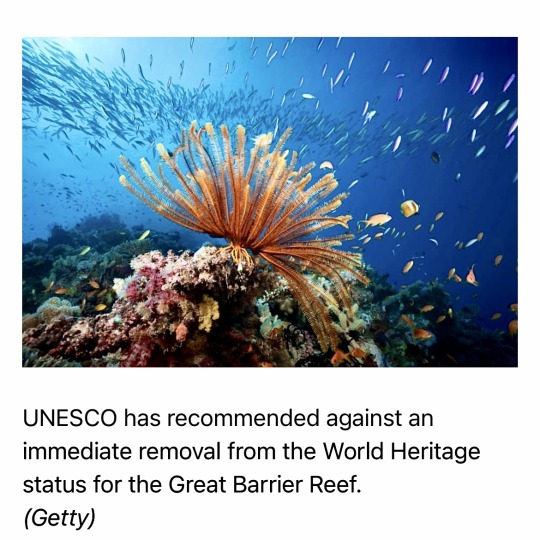
Australia gains reprieve on threat to Great Barrier Reef World Heritage status.
By Mike Foley
The Age - August 1, 2023
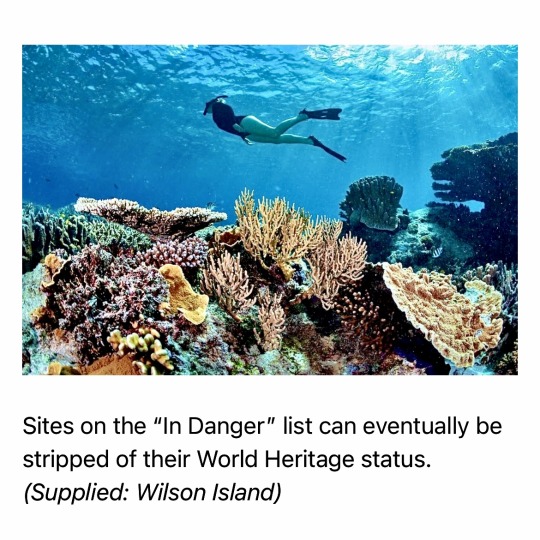
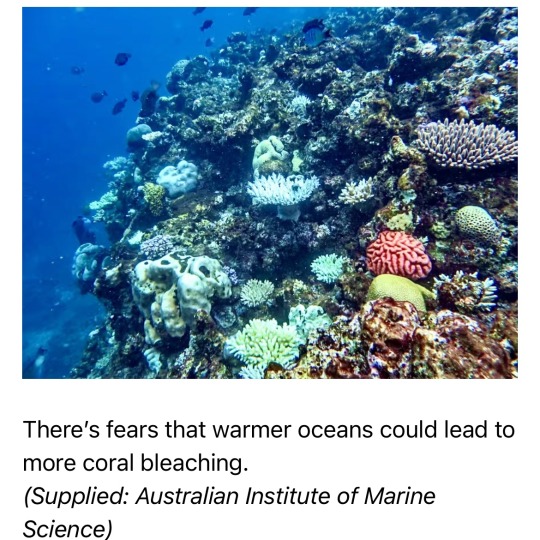
Great Barrier Reef escapes 'in danger' recommendation ahead of UNESCO World Heritage decision
By the Specialist Reporting Team's Leonie Thorne, Penny Timms, Emilia Terzon and Evan Young
ABC News - 1 August 2023

Great Barrier Reef's first mass bleaching during La Niña season halts coral recovery.
AAP Australian Associated Press
ABC News - 9 August 2023
YouTube video >> Recovery has paused on the Great Barrier Reef - Marine Scientist Dr. Mike Emslie: AIMS (Australian Institute of Marine Science) annual summary update for 2023 [9 August 2023 / 3mins.+44secs.]:
youtube
Dr Mike Emslie says the Great Barrier Reef's recovery has paused.
Climate Change is the greatest threat to the Reef
In-water monitoring hard coral cover across the Great Barrier Reef remains at similar levels to that recorded in 2022, with small decreases in the Northern, Central and Southern regions.
AIMS' Annual Summary Report on Coral Reef Condition for 2022/23 (published 9th August 2023) found that while some reefs continued to recover, their increased hard coral cover was offset by coral loss on other reefs.
Most reefs underwent little change in coral cover.
The pauses in recovery in the Northern and Central regions were due in part to the 2022 mass coral bleaching event. Low numbers of coral-eating crown-of-thorns starfish and a cyclone in January 2022 also contributed to coral loss in the Northern region.
Continued crown-of-thorns starfish outbreaks and coral disease kept coral cover similar to last year's levels in the Southern region, with bleaching playing less of a role.
Read the report: https://www.aims.gov.au/monitoring-great-barrier-reef/gbr-condition-summary-2022-23
More about the AIMS Long-Term Monitoring Program: https://www.aims.gov.au/research-topics/monitoring-and-discovery/monitoring-great-barrier-reef/long-term-monitoring-program
YouTube video >> Monitoring the Great Barrier Reef - AIMS Coral Reef Ecologist Kate Osborne [25 July 2022 / 3mins.+52secs.]:
youtube
Monitoring the Great Barrier Reef
Not only is the Great Barrier Reef big, it is also diverse and dynamic.
For more than 35 years, the Australian Institute of Marine Science's Long-Term Monitoring Program (LTMP) has been dedicated to measuring its coral reef habitats to understand how surveyed reefs are responding to disturbances, such as severe cyclones, outbreaks of coral eating starfish and coral bleaching.
The LTMP provides an invaluable record of change on coral communities across the Great Barrier Reef.
To learn more, visit: https://www.aims.gov.au/research-topics/monitoring-and-discovery/monitoring-great-barrier-reef
#Australia#Great Barrier Reef#Environment#Oceans & reefs#Australian Federal Government#Environmental policy#Nature & biodiversity#Heritage protection#Conservation#Maritime culture#Marine Science#YouTube#Climate Change#AIMS Australian Institute of Marine Science#AIMS Marine Scientist Dr. Mike Emslie#AIMS Coral Reef Ecologist Kate Osborne#Monitoring the Great Barrier Reef#Science-based research & evidence of Climate Change#Sustainable living#Connection with nature
2 notes
·
View notes
Text
research finds Male dolphins form lifelong bonds that help them find mates ~ By Sofia Quaglia

Dolphins form decade-long social bonds, and cooperate among and between cliques, to help one another find mates and fight off competitors, new research has found – behaviour not previously confirmed among animals.
“These dolphins have long-term stable alliances, and they have intergroup alliances. Alliances of alliances of alliances, really,” said Dr Richard Connor, a behavioural ecologist at the University of Massachusetts Dartmouth and one of the lead authors of the paper. “But before our study, it had been thought that cooperative alliances between groups were unique to humans.”
The findings, published on Monday in the journal Proceedings of the National Academy of Sciences, appear to support the “social brain” hypothesis: that mammals’ brains evolved to be larger in size for animals that keep track of their social interactions and networks. Humans and dolphins are the two animals with the largest brains relative to body size. “It’s not a coincidence,” Connor said.
Connor’s team of researchers collected data between 2001 and 2006 by conducting intensive boat-based surveys in Shark Bay, Western Australia. The researchers tracked the dolphins by watching and listening to them, using their unique identifying whistles to tell them apart.
They observed 202 Indo-Pacific bottlenose dolphins (Tursiops aduncus), including during the peak mating season between September and November.
Back in the lab, they pored over data focusing on 121 of these adult male dolphins to observe patterns in their social networks. And for the next decade they continued to analyse the animals’ alliances.
Dolphins’ social structures are fluid and complex. The researchers found alliances among two or three male dolphins – like best friends. Then the groups expanded to up to 14 members. Together, they helped each other find females to herd and mate with, and they help steal females from other dolphins as well as defend against any “theft” attempts from rivals.
“What happens as a male, you might be in a trio, herding a female. And if someone comes to take that female, the other males in your team and your second-order alliance come in and help you,” said Dr Stephanie King, professor in animal behaviour at Bristol University and one of the authors of the study. “These males have a very, very clear idea of who is in their team.”
These teams can last for decades and are formed when the dolphins are still young, although they do not tend to reap the rewards of paternity until their mid-teens, King said. “It’s a significant investment that starts when they’re very young – and these relationships can last their entire lives.”
Sometimes, especially when dolphin groups feel there is a risk to themselves, two second-order alliances will also come together to form a larger team. As a result, among the dolphins observed by the scientists, every male was directly connected to between 22 and 50 other dolphins.
The researchers’ observations show that in these groups, the tighter the clique – and the stronger the bonds between the dolphins – the more success they have attracting females.
It’s their cooperative relationships, rather than alliance size, which gives males more breeding success, said King.
It is already widely known that dolphins are highly social and cooperative, as well as being remarkably good at adapting to and teaching behaviour specific to their environment, said Stephanie Venn-Watson, former director of Translational Medicine and Research at the National Marine Mammal Foundation in San Diego, California, who was not involved in the study.
“One would not rule out the possibility that other cetaceans could develop similar alliances,” said Venn-Watson. “These complex behaviours will likely be limited to large-brained mammals.”
According to the researchers behind the paper, this is the only non-human example of these kinds of strategic multilevel alliances to have been observed. But these findings also highlight the cognitive demands these animals face, suggesting that dolphins’ large brains help them to keep track of the different relationships, Connor said.
“I would say that dolphins and humans have converged in the evolution of between-group alliances – an incredibly complex social system,” said Connor. “And it’s astonishing because we are so different from dolphins.”
2 notes
·
View notes
Text
OCEAN STORIES:
1st Edition:
Welcome to my Ocean Stories blog. For this 1st edition, I have updates on beautiful Corals. Let's get reading it:

According to the Australian Institute of Marine Science , a new survey including 87 reefs found that corals were recovered from across two-third areas of Australia's Great Barrier Reef. The recovery were the highest in the northern and the central barrier reef. In the south, the coral cover was found decreasing. The Australian Institute of Marine Science has been conducting annual survey of this UNESCO World Heritage Site. The site has been monitored since 36 years. The survey was conducted during August 2021 and May 2022 through aerial surveying and with the help of divers. In the monitoring period, the reef has been showing recovery after disturbances.
The widespread recovery was largely due to increase in the dominant Acropora coral group. Coral bleaching occurred during the survey period due to above-average water temperature. The accumulated heat stress caused widespread bleaching but didn't contribute to the extensive mortality of the corals. The survey monitored other acute stresses as lower and there was no severe cyclones observed. However, bleaching could effect the coral's reproduction and make them prone to diseases.
Due to global warming and climate change, destructive events like cyclones, bleaching etc. have become more frequent and also last for longer duration. Also, half of the coral reef is lost due to the predator crown-of-thorns starfish which preys on corals and survives better on an increased sea temperature.
The survey observed that due to acute stresses and lower accumulated heat stresses in 2020 and 2022 led to lower coral mortality and an increasing coral cover in the northern and central parts of the reef compared to 4-5 years back.
The fast growing branching and plate like Acropora coral is particularly vulnerable to the changing climate. Hence, it is important to take immediate actions to protect the reef and to tackle climate change effects. Otherwise, marine heatwaves, tropical cyclones and threat from the crown-of-thorns starfish outbreaks (specially in the southern reef) would make it difficult to maintain the recovery of the coral reef cover in the Great Barrier Reef.
#coral bleaching#art#photography#literature#painting#science#positivity#parenting#ocean#science stories#ocean life#marine science#marine life#scientists
2 notes
·
View notes
Photo

Potentially Alive 830-Million-Year-Old Microorganisms Found Trapped in Ancient Rock - Science Alert
... The middle of Australia is desert now, but it was once an ancient salty sea. The Browne Formation is a well-characterized and dated stratigraphic unit from central Australia, dating back to the Neoproterozoic. It includes extensive halite, indicative of an ancient marine environment.
Using a core sample from the Browne Formation extracted by the Geological Survey of Western Australia in 1997, Schreder-Gomes and her colleagues were able to conduct investigations of unaltered Neoproterozoic halite using nothing but non-invasive optical methods. This left the halite intact; which, importantly, means that anything inside had to have been trapped at the time the crystals formed. ...
2 notes
·
View notes
Text
The coral reef is currently experiencing its worst mass bleaching event on record — warming waters brought on by climate change are to blame.
Australia’s iconic Great Barrier Reef is fundamentally changing because of repeated bleaching from high ocean temperatures brought on by climate change, according to marine biologists.
“It's not a question of reefs dying or reefs disappearing, it's reef ecosystems transforming into a new configuration,” says marine biologist Terry Hughes, from James Cook University in Townsville, Australia.
“Species like fish and crustaceans and so on — the iconic biodiversity of reefs — all depend on the structure and three dimensionality the habitat provided by corals,” Hughes says. “When you lose a lot of corals, it affects everything that's dependent on corals.”
Corals ‘bleach’ when stressed, expelling their colourful resident zooxanthellae. According to a report released on 17 April by the Great Barrier Reef Marine Park Authority – the Australian government’s reef management agency — the World Heritage-listed reef is experiencing its worst mass bleaching event on record. The Reef Snapshot said three-quarters of the entire reef is showing signs of bleaching and nearly 40 percent is showing high or extreme bleaching.
The report is based on aerial surveys of 1,080 of the Great Barrier Reef’s estimated 3,000 individual reefs, and in-water surveys of a smaller number of reefs.
It showed that while bleaching was observed along the entire length of the Great Barrier Reef, it was most severe in the central and southern regions.
“We've never seen this level of heat stress across all three regions of the Great Barrier Reef,” says Brisbane-based marine biologist Lissa Schindler, from the Australian Marine Conservation Society.
This is the fifth mass bleaching event on the Great Barrier Reef in eight years. Hughes warns that climate change-driven increases in ocean temperatures are making it more difficult for the Reef’s corals to recover between bleaching events. “In the last six years, we've settled into bleaching every other year – in 2020, 2022, and now 2024 – and that's simply not enough time for a proper recovery,” he says.
Global phenomenon
The Snapshot was one of a series of reports released this week on coral bleaching that also sounded alarm bells for reefs. The Australian Institute of Marine Science announced on 18 April that the Great Barrier Reef experienced water temperatures in parts of the southern reef at 2.5 degrees Celsius higher than historical summer peaks.
Meanwhile on 15 April the United States’ National Oceanic and Atmospheric Administration declared the fourth global coral bleaching event on record, and the second in the past decade. The declaration acknowledges that the warmth of the southern hemisphere summer mirrored coral bleaching events seen in the northern hemisphere summer last year.
It comes as global sea surface temperatures again broke records in 2023, associated with a strong El Niño weather pattern, recording an annual average temperature around 0.3 degrees Celsius higher in the second half of 2023 compared with 2022.
“There have been very high temperatures driven by climate change all across the world, and there has been coral bleaching in many other countries,” says environmental scientist Roger Beeden, chief scientist for the Great Barrier Reef Marine Park Authority, Townsville.
Hughes says the warming climate is pushing reefs to have less coral, and the mix of coral species is changing. For example, the branching and table-shaped corals are often the fastest to recover from a bleaching event because they are fast-growing, Hughes says. However they’re also very prone to bleaching and have higher levels of mortality during bleaching events.
“It's a bit analogous to a fire on land through a forest, that favours a bounce-back by flammable grasses before the trees can recover,” he says. “Ironically, that that bounce-back, that resilience, undermines the ability of the reef to cope with the next inevitable bleaching event.” Seaweeds also flourish when corals degrade.
Beeden says those who live and work on the Reef are observing significant changes. “There's historical photos that show inshore reefs that were laden with coral, and that’s very different now,” he says.
He says there are an estimated 450 different species of coral on the Reef, and such diversity means there is a chance the Reef will adapt to the changing conditions, even if it changes character. “What we see within species is definitely there is variability in how they respond to stress events.”
Hughes says the solution to the Great Barrier Reef’s bleaching problem is clear. “Reduce greenhouse gas emissions. Full stop.”
0 notes
Text
Aquatic Robot Market to Eyewitness Huge Growth by 2030
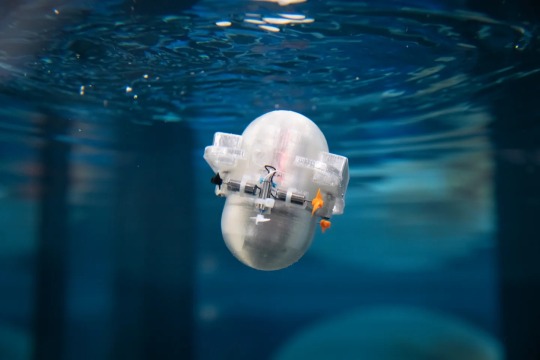
Latest business intelligence report released on Global Aquatic Robot Market, covers different industry elements and growth inclinations that helps in predicting market forecast. The report allows complete assessment of current and future scenario scaling top to bottom investigation about the market size, % share of key and emerging segment, major development, and technological advancements. Also, the statistical survey elaborates detailed commentary on changing market dynamics that includes market growth drivers, roadblocks and challenges, future opportunities, and influencing trends to better understand Aquatic Robot market outlook.
List of Key Players Profiled in the study includes market overview, business strategies, financials, Development activities, Market Share and SWOT analysis:
Atlas Maridan ApS. (Germany), Deep Ocean Engineering Inc. (United States), Bluefin Robotics Corporation (United States), ECA SA (France), International Submarine Engineering Ltd. (Canada), Inuktun Services Ltd. (Canada), Oceaneering International, Inc. (United States), Saab Seaeye (Sweden), Schilling Robotics, LLC (United States), Soil Machine Dynamics Ltd. (United Kingdom)
Download Free Sample PDF Brochure (Including Full TOC, Table & Figures) @ https://www.advancemarketanalytics.com/sample-report/177845-global-aquatic-robot-market
Brief Overview on Aquatic Robot:
Aquatic robots are those that can sail, submerge, or crawl through water. They can be controlled remotely or autonomously. These robots have been regularly utilized for seafloor exploration in recent years. This technology has shown to be advantageous because it gives enhanced data at a lower cost. Because underwater robots are meant to function in tough settings where divers' health and accessibility are jeopardized, continuous ocean surveillance is extended to them. Maritime safety, marine biology, and underwater archaeology all use aquatic robots. They also contribute significantly to the expansion of the offshore industry. Two important factors affecting the market growth are the increased usage of advanced robotics technology in the oil and gas industry, as well as increased spending in defense industries across various countries.
Key Market Trends:
Growth in AUV Segment
Opportunities:
Adoption of aquatic robots in military & defense
Increased investments in R&D activities
Market Growth Drivers:
Growth in adoption of automated technology in oil & gas industry
Rise in awareness of the availability of advanced imaging system
Challenges:
Required highly skilled professional for maintenance
Segmentation of the Global Aquatic Robot Market:
by Type (Remotely Operated Vehicle (ROV), Autonomous Underwater Vehicles (AUV)), Application (Defense & Security, Commercial Exploration, Scientific Research, Others)
Purchase this Report now by availing up to 10% Discount on various License Type along with free consultation. Limited period offer.
Share your budget and Get Exclusive Discount @: https://www.advancemarketanalytics.com/request-discount/177845-global-aquatic-robot-market
Geographically, the following regions together with the listed national/local markets are fully investigated:
• APAC (Japan, China, South Korea, Australia, India, and Rest of APAC; Rest of APAC is further segmented into Malaysia, Singapore, Indonesia, Thailand, New Zealand, Vietnam, and Sri Lanka)
• Europe (Germany, UK, France, Spain, Italy, Russia, Rest of Europe; Rest of Europe is further segmented into Belgium, Denmark, Austria, Norway, Sweden, The Netherlands, Poland, Czech Republic, Slovakia, Hungary, and Romania)
• North America (U.S., Canada, and Mexico)
• South America (Brazil, Chile, Argentina, Rest of South America)
• MEA (Saudi Arabia, UAE, South Africa)Furthermore, the years considered for the study are as follows:
Historical data – 2017-2022
The base year for estimation – 2022
Estimated Year – 2023
Forecast period** – 2023 to 2028 [** unless otherwise stated]
Browse Full in-depth TOC @: https://www.advancemarketanalytics.com/reports/177845-global-aquatic-robot-market
Summarized Extracts from TOC of Global Aquatic Robot Market Study Chapter 1: Exclusive Summary of the Aquatic Robot market
Chapter 2: Objective of Study and Research Scope the Aquatic Robot market
Chapter 3: Porters Five Forces, Supply/Value Chain, PESTEL analysis, Market Entropy, Patent/Trademark Analysis
Chapter 4: Market Segmentation by Type, End User and Region/Country 2016-2027
Chapter 5: Decision Framework
Chapter 6: Market Dynamics- Drivers, Trends and Challenges
Chapter 7: Competitive Landscape, Peer Group Analysis, BCG Matrix & Company Profile
Chapter 8: Appendix, Methodology and Data Source
Buy Full Copy Aquatic RobotMarket – 2021 Edition @ https://www.advancemarketanalytics.com/buy-now?format=1&report=177845
Contact US :
Craig Francis (PR & Marketing Manager)
AMA Research & Media LLP
Unit No. 429, Parsonage Road Edison, NJ
New Jersey USA – 08837
Phone: +1 201 565 3262, +44 161 818 8166
[email protected]
#Global Aquatic Robot Market#Aquatic Robot Market Demand#Aquatic Robot Market Trends#Aquatic Robot Market Analysis#Aquatic Robot Market Growth#Aquatic Robot Market Share#Aquatic Robot Market Forecast#Aquatic Robot Market Challenges
0 notes
Text
Military Radio System Market Analysis, Dynamics, Players, Type, Applications, Trends, Regional Segmented, Outlook & Forecast till 2033
The Military Radio System Market has been valued at USD 8.57 billion in 2023, to reach USD 13.31 billion by 2033, and registering a CAGR of 4.5% during the 2024-2033.
The competitive analysis of the Military Radio System Market offers a comprehensive examination of key market players. It encompasses detailed company profiles, insights into revenue distribution, innovations within their product portfolios, regional market presence, strategic development plans, pricing strategies, identified target markets, and immediate future initiatives of industry leaders. This section serves as a valuable resource for readers to understand the driving forces behind competition and what strategies can set them apart in capturing new target markets.
Market projections and forecasts are underpinned by extensive primary research, further validated through precise secondary research specific to the Military Radio System Market. Our research analysts have dedicated substantial time and effort to curate essential industry insights from key industry participants, including Original Equipment Manufacturers (OEMs), top-tier suppliers, distributors, and relevant government entities.
Key Matrix:
Market Size and Growth Rate:
Definition: Determine the total size of the market in terms of revenue, units sold, or other relevant metrics.
Importance: Indicates the overall opportunity and potential for businesses in the market.
Methodology: Use a combination of primary and secondary research to gather data, including surveys, interviews, and analysis of existing reports.
Competitive Landscape:
Definition: Identify and analyze key competitors in the market.
Importance: Helps businesses understand their position relative to competitors and potential areas for differentiation.
Methodology: Conduct a competitive analysis, examining market share, strengths and weaknesses, strategies, and any recent developments of major players.
Customer Demographics and Preferences:
Definition: Understand the characteristics of the target customer base, including demographics, behaviors, and preferences.
Importance: Guides product development, marketing strategies, and customer engagement efforts.
Methodology: Utilize surveys, interviews, and data analysis to gather information on customer demographics, buying habits, and preferences.
Trends and Opportunities:
Definition: Identify current and emerging trends that may impact the market, as well as potential opportunities for growth.
Importance: Helps businesses stay ahead of the curve and capitalize on evolving market dynamics.
Methodology: Analyze industry reports, consumer behavior data, and expert opinions to identify trends. Conduct a SWOT analysis to uncover opportunities and threats.
Receive the FREE Sample Report of Military Radio System Market Research Insights @ https://stringentdatalytics.com/sample-request/military-radio-system-market/13283/
Market Segmentations:
Global Military Radio System Market: By Company
• Barrett Communications
• Leonardo
• Harris Corporation
• Radmor
• Thales Communications & Security
• Codan Limited
• Elbit Systems
• Flir Systems
• Rockwell Collins
• Safran
Global Military Radio System Market: By Type
• Manpack Radios
• Vehicular Radios
Global Military Radio System Market: By Application
• Marines
• Ground Forces
• Air Force
Regional Analysis of Global Military Radio System Market
All the regional segmentation has been studied based on recent and future trends, and the market is forecasted throughout the prediction period. The countries covered in the regional analysis of the Global Military Radio System market report are U.S., Canada, and Mexico in North America, Germany, France, U.K., Russia, Italy, Spain, Turkey, Netherlands, Switzerland, Belgium, and Rest of Europe in Europe, Singapore, Malaysia, Australia, Thailand, Indonesia, Philippines, China, Japan, India, South Korea, Rest of Asia-Pacific (APAC) in the Asia-Pacific (APAC), Saudi Arabia, U.A.E, South Africa, Egypt, Israel, Rest of Middle East and Africa (MEA) as a part of Middle East and Africa (MEA), and Argentina, Brazil, and Rest of South America as part of South America.
Click to Purchase Military Radio System Market Research Report @ https://stringentdatalytics.com/purchase/military-radio-system-market/13283/
Historical developments:
Market Evolution:
Overview: Trace the historical development of the market, from its inception to the present day.
Importance: Understanding how the market has evolved provides context for current trends and future projections.
Data Sources: Historical market reports, industry publications, and archival records can be valuable sources for tracking market evolution.
Technological Advances:
Overview: Examine significant technological developments that have shaped the market.
Importance: Technology often drives market changes and innovation, impacting product offerings, efficiency, and consumer behavior.
Data Sources: Historical records, patent filings, and industry publications can provide insights into technological advancements.
Regulatory Changes:
Overview: Analyze past regulatory developments that have influenced the market.
Importance: Regulatory changes can have a profound impact on market dynamics, affecting entry barriers, product standards, and industry competitiveness.
Data Sources: Regulatory documents, government publications, and legal records can be valuable sources for tracking regulatory changes.
Economic Shifts:
Overview: Examine historical economic trends and their influence on the market.
Importance: Economic factors, such as recessions, expansions, or global economic shifts, can significantly impact consumer spending patterns and market demand.
Data Sources: Economic reports, financial records, and historical market analyses can provide insights into economic shifts.
Consumer Behavior Changes:
Overview: Explore historical shifts in consumer preferences, behaviors, and buying patterns.
Importance: Changes in consumer behavior can drive market trends, affecting product demand, marketing strategies, and distribution channels.
Data Sources: Surveys, market research studies, and historical consumer data can help track changes in consumer behavior over time.
Customization of the Report:
This report can be customized to meet the client’s requirements. Please connect with our sales team ([email protected] ), who will ensure that you get a report that suits your needs. You can also get in touch with our executives on +1 346 666 6655 to share your research requirements.
Answered Questions of Military Radio System Market
What is the current size of the target market in terms of revenue, units sold, or other relevant metrics?
Who are the key competitors in the market, and what is their market share?
How has the market evolved over the past decade, and what are the key historical developments that have influenced its trajectory?
What are the primary demographic characteristics of the target customer base, and how have these demographics changed over time?
What are the main factors driving or inhibiting market growth, and how have these factors evolved in recent years?
What technological advancements have impacted the market, and how have these changes affected product offerings and consumer preferences?
How have regulatory changes, if any, influenced the market landscape, and what is the regulatory outlook for the future?
What economic factors, such as recessions or expansions, have historically affected consumer spending patterns in the market?
How has consumer behavior changed over time, and what are the current trends in purchasing habits and preferences?
What emerging trends and opportunities are expected to shape the future of the market, and how can businesses position themselves to capitalize on these trends?
About Stringent Datalytics
Stringent Datalytics offers both custom and syndicated market research reports. Custom market research reports are tailored to a specific client's needs and requirements. These reports provide unique insights into a particular industry or market segment and can help businesses make informed decisions about their strategies and operations.
Syndicated market research reports, on the other hand, are pre-existing reports that are available for purchase by multiple clients. These reports are often produced on a regular basis, such as annually or quarterly, and cover a broad range of industries and market segments. Syndicated reports provide clients with insights into industry trends, market sizes, and competitive landscapes. By offering both custom and syndicated reports, Stringent Datalytics can provide clients with a range of market research solutions that can be customized to their specific needs.
Reach US
Stringent Datalytics
+1 346 666 6655
Social Channels:
Linkedin | Facebook | Twitter | YouTube
0 notes
Text

New SpaceTime out Monday....
SpaceTime 20231106 Series 26 Episode 133
Do the remains of an ancient planet lie deep within Earth
Back in the 1980s, geophysicists discovered two continent-sized blobs of unusual material buried deep within the Earth’s mantle. Now, a new study reported in the journal Nature suggests that they’re the remnants of the ancient planet Theia which collided with Earth four and a half billion years ago creating the Moon.






Lucy’s first asteroid encounter discovers a new moonlet
NASA's Lucy spacecraft has just completed its first asteroid encounter flying by the small main belt asteroid 152830 Dinkinesh – discovering that it’s a binary.
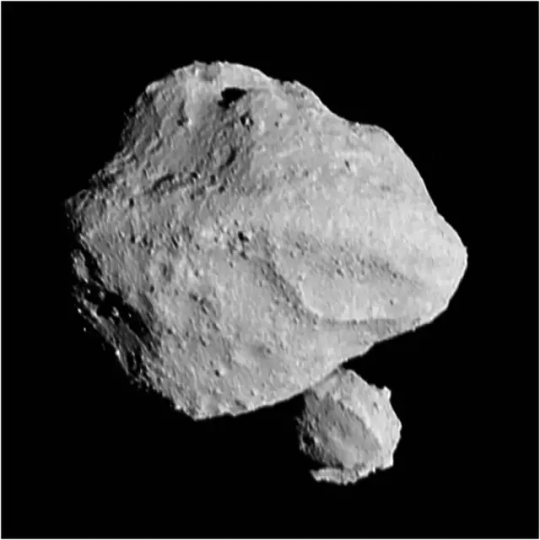


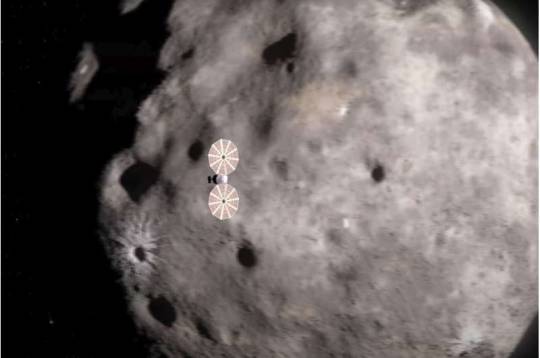

Venus had Earth-like plate tectonics billions of years ago
Venus, may have once had tectonic plate movements similar to those believed to have occurred on early Earth.




The Science Report
A new study has found a link between cell phone usage and semen quality.
Warnings that the impacts of marine heatwaves on marine life may be worse deep down in our oceans.
The 2022 Hunga-Tonga Hunga-Ha'apai volcanic eruption depleted 5% of the ozone layer.
Skeptics guide to another finding bigfoot claim
SpaceTime covers the latest news in astronomy & space sciences.
The show is available every Monday, Wednesday and Friday through Apple Podcasts (itunes), Stitcher, Google Podcast, Pocketcasts, SoundCloud, Bitez.com, YouTube, your favourite podcast download provider, and from www.spacetimewithstuartgary.com
SpaceTime is also broadcast through the National Science Foundation on Science Zone Radio and on both i-heart Radio and Tune-In Radio.
SpaceTime daily news blog: http://spacetimewithstuartgary.tumblr.com/
SpaceTime facebook: www.facebook.com/spacetimewithstuartgary
SpaceTime Instagram @spacetimewithstuartgary
SpaceTime twitter feed @stuartgary
SpaceTime YouTube: @SpaceTimewithStuartGary
SpaceTime -- A brief history
SpaceTime is Australia’s most popular and respected astronomy and space science news program – averaging over two million downloads every year. We’re also number five in the United States. The show reports on the latest stories and discoveries making news in astronomy, space flight, and science. SpaceTime features weekly interviews with leading Australian scientists about their research. The show began life in 1995 as ‘StarStuff’ on the Australian Broadcasting Corporation’s (ABC) NewsRadio network. Award winning investigative reporter Stuart Gary created the program during more than fifteen years as NewsRadio’s evening anchor and Science Editor. Gary’s always loved science. He studied astronomy at university and was invited to undertake a PHD in astrophysics, but instead focused on his career in journalism and radio broadcasting. He worked as an announcer and music DJ in commercial radio, before becoming a journalist and eventually joining ABC News and Current Affairs. Later, Gary became part of the team that set up ABC NewsRadio and was one of its first presenters. When asked to put his science background to use, Gary developed StarStuff which he wrote, produced and hosted, consistently achieving 9 per cent of the national Australian radio audience based on the ABC’s Nielsen ratings survey figures for the five major Australian metro markets: Sydney, Melbourne, Brisbane, Adelaide, and Perth. The StarStuff podcast was published on line by ABC Science -- achieving over 1.3 million downloads annually. However, after some 20 years, the show finally wrapped up in December 2015 following ABC funding cuts, and a redirection of available finances to increase sports and horse racing coverage. Rather than continue with the ABC, Gary resigned so that he could keep the show going independently. StarStuff was rebranded as “SpaceTime”, with the first episode being broadcast in February 2016. Over the years, SpaceTime has grown, more than doubling its former ABC audience numbers and expanding to include new segments such as the Science Report -- which provides a wrap of general science news, weekly skeptical science features, special reports looking at the latest computer and technology news, and Skywatch – which provides a monthly guide to the night skies. The show is published three times weekly (every Monday, Wednesday and Friday) and available from the United States National Science Foundation on Science Zone Radio, and through both i-heart Radio and Tune-In Radio.
#science#space#astronomy#physics#news#nasa#esa#astrophysics#spacetimewithstuartgary#starstuff#spacetime
21 notes
·
View notes
Text
2017 : "Dit lip hue hng 直入花園", electroacoustic composition
PENGHU EXPERIMENTAL SOUND STUDIO #3
« The title of this sound piece is borrowed to Nanguan, an ancient music style from Southern China, still practiced in Taiwan. This song, part of a Taoist ritual, describes a journey into an other-wordly and colorful garden. The condition of the plants and the pavilion seen on the path would reflect the participant's future.
I have been visiting Penghu archipelago, Taiwan, since 2004. Its islands, surrounded by blue-green water, and battled by the wind during the Winter, are presenting a unique landscape of basalt structures, prairies and houses made of coral blocks.
But the most attractive and precious environments are underwater. In 2008, a cold water stream, consequence of climate change, destroyed a large part of the coral reefs. Overfishing, drifting garbage, abandoned fishing nets and construction projects constitute a huge pressure on these natural habitats.
I have done underwater recordings since a while, but it is only this year that I finally started a more systematic sound documentation, in collabo- ration with marine biologists, experimenting with recording techniques, initiating a sound archive and bioacoustic survey.
I consider Dit lip hue hng as a metaphor : visiting these underwater gardens and observing their condition might give us a hint about our own future as a human species. »
Field recordings & composition : Yannick Dauby 澎葉生
Nanpa and interviewee : Yung-Chieh Chang 張詠捷
Voice : Lysianassa Dauby 澎科萌
Commissioned by Bogong Centre for Sound Culture for the event "The Ecology of Place", Melbourne, Australia, June 2017.
bogongsound.com.au
Release by Kalerne Editions (Taiwan) and Discrepant (UK) in November 2020.
Please check the first two volumes of the series Penghu Experimental Sound Studio, published as 12" records. discrepant.net
0 notes
Text
6 Marine Services Offered by Offshore Shipping Company

A major part of many vessel-related activities and functions are performed by offshore shipping company. These services are intended to assist in controlling the flow of vessel traffic, promote safer vessel manoeuvring and berthing, and even enhance port or marine efficiency and security. Currently operating offshore vessel operators frequently provide these services.
Operators of offshore vessels can take many various forms, from those that offer services for supply, maintenance, logistics, and many other operational needs. With their role in the sector, these vessel operators may demonstrate effectiveness and high calibre performance.
The many maritime services provided by operators of offshore vessels are covered here. For more information, keep reading.
1. Dive Support
Supporting different nautical projects and activities is one of the most typical services provided by offshore boats. These services are frequently tailored to meet the needs of diving operations. Securing and hooking up the vessel during diving operations is the main duty of offshore boats in dive support. Effective anchor mooring techniques are frequently used in the service. How operate mooring systems? The mooring line for this system is constructed from fibre ropes, chains, wires, or any combination of these materials. The water depth may affect the materials utilised. During operations, mooring lines' anchors are fixed to the bottom, restricting vessel movement.
Maritime services are vital to the economies of many nations. These services have had a significant impact on the supply chain and economic expansion of the United States. From the domestic market to the international one, they are integral to the end-to-end trade activities. hence permitting the ongoing flow of supplies and materials for the nation's industrial sectors. American marine services are frequently offered at Chalmette, Newark, and other locations.
Similar to this, Australia's marine sector has significantly boosted the country's economy. Many major cities, like Darwin, Perth, Brisbane, Dampier, and many more, rely heavily on offshore services for their shipping and trading needs. They assist oil and gas activities, provide engineering and project management, energy and transmission from renewable sources, build and install offshore structures, conduct offshore surveys and positioning, and more. They provide a variety of maritime services.
2. Offshore Accommodation
Existing boats are provided with offshore lodgings for offshore workforce. For their sizable personnel, the majority of marine businesses require sufficient space. Offshore shipping company supply this necessary housing by using module decks to accommodate and shelter surplus and current offshore personnel.
By using dynamic and adaptable facility quarters or stations, these accommodation boats give staff a permanent or alternate place to sleep in addition to a host of other uses. In this way, marine enterprises can keep running their businesses and give their staff higher standards of living and comfort.
The number of staff and available space might also change based on the projects being worked on. The owners of offshore vessels will be the ones to purchase and modify the necessary lodging facilities.
3. Transhipping and Supply
Transferring different kinds of cargo from one vessel to another is the aim of transhipping. To aid finish the transfer of goods or containers, offshore vessel operators can offer this form of maritime service.
In addition, this maritime service may handle the carrying and transportation of workers, supplies, and equipment to meet the production and operational needs of mineral and energy resource extraction. Supplies of gasoline, freshwater, liquid mud, dry mass, etc., may be among them.
4. Oil and Gas Field Support
For the oil and gas sectors, offshore vessel operators also offer oil field assistance. The duties performed by this naval service include drilling to extract hydrocarbons from the sea floor and exploring for oil and gas. Jack-up installations, which raise boats above sea level and are also utilised for offshore wind farms, are an additional offshore vessel service associated with these activities by offshore shipping company.
It may also offer vessel tenders and floating platform installations as complementary services for oil and gas field assistance. Support is offered, particularly during exploratory activities, by these floating platforms and tenders.
5. Standby Operations
Rescue and response vessels and services are crucial as offshore industries heavily rely on evacuation and emergency procedures. In order to properly carry out evacuation plans and prompt reactions during crises, offshore vessel operators that provide standby operating services must provide extra facilities and equipment.
Search and rescue, first aid, and safety monitoring through approaching vessel alerts are all capabilities of standby operating services. They also include all the amenities required for survival and medical attention in some unanticipated underwater situations.
6. Geo Survey
Geo-survey activities are among the marine services offered by offshore shipping company. What do these mean? Geospatial surveys offer the data required for various activities such as exploratory mining, wind farm projects, and more. Geo surveys offer high-resolution information and mapping of the geological composition, shape, and state of the seabed.
Geophysical and geotechnical surveys are the two categories of offshore geo surveys. Geophysical surveys are mostly required to make sure that projects and developments at water depths are safe enough to lower or eliminate risk for offshore developers and similar entities. Conversely, geotechnical surveys are in charge of examining and evaluating soil qualities and foundations; these services are mostly required for the oil and gas sector and other associated activities.
Conclusion
Diverse services offered by offshore shipping company like Focal Shipping are beneficial to many maritime businesses. In addition to the services listed above, they are still able to provide and supply more. An overview of how these offshore vessel operators may meet the requirements of a particular project or activities offshore can be obtained by being aware of the various services they offer.
1 note
·
View note
Text
0 notes
Text
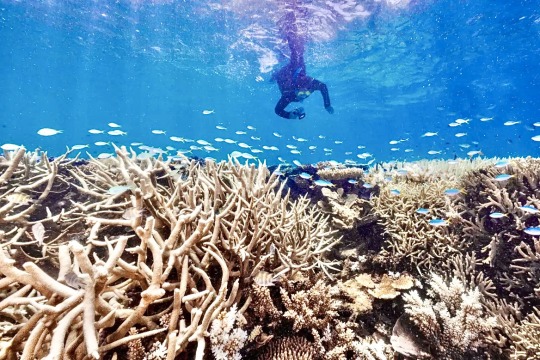
Climate change is the greatest threat to the Great Barrier Reef — and globally, coral reef bleaching events are increasing exponentially.
(Photo: Australian Marine Conservation Society - Harriet Spark)
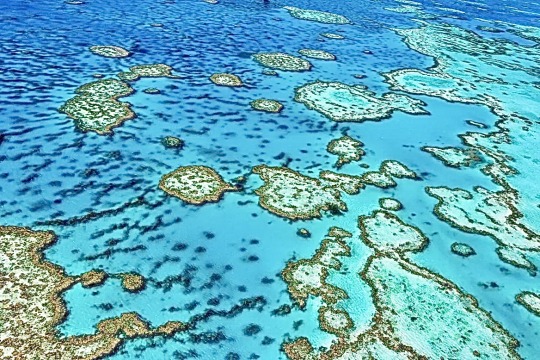
An environmental group is taking the Australian Environment Minister and two coal companies to court for allegedly failing to protect the Great Barrier Reef.
Mass coral bleaching on Great Barrier Reef sparks fear of global event
An unprecedented fifth mass coral bleaching event in just eight years is rolling across the Great Barrier Reef, the result of yet another marine heatwave in another sign of the deteriorating forecasts for Australia’s marine wonder under global warming.
The Great Barrier Reef Marine Park Authority said aerial surveys indicated that two-thirds of the reefs that comprise the 2300-kilometre-long ecosystem along the Queensland coast showed signs of bleaching, which could be attributed to a marine heatwave.
“Climate change is the greatest threat to the Great Barrier Reef and coral reefs globally,” the authority’s chief scientist, Dr Roger Beeden, said on Friday.
“The results are consistent with what we have seen with above-average sea surface temperatures across the reef for an extended period of time.”
The current bleaching event follows similar reports from reefs around the world over the past 12 months. Northern hemisphere reefs have suffered coral bleaching as a result of climate-change-driven elevated ocean temperatures, amplified by El Nino conditions in the Pacific Ocean.
By Mike Foley
The Age - March 8, 2024
•
•

The Great Barrier Reef is suffering through a fifth mass bleaching event in eight years.
(Photo: The Undertow)

A diver among bleached coral in the southern region of the Great Barrier Reef.
(Photo: The Undertow)
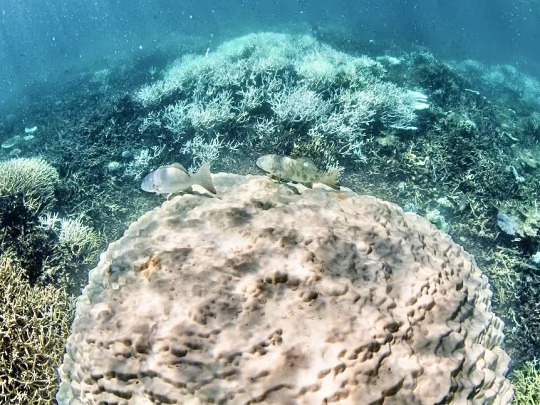
Bommie corals, which can be up to 200 years old, have suffered bleaching in the current event.
(Photo: The Undertow.)

GBRMPA chief scientist Roger Beeden says he cannot be sure what effects the bleaching will have. (Photo: Brendan Mounter / ABC News)
By Peter McCutcheon
ABC TV 7.30 program
ABC News - 14 March 2024
•
0 notes